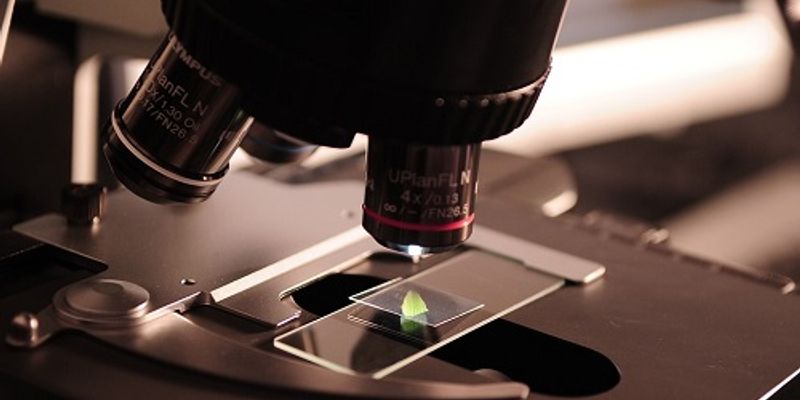Cell Line Development: Stable cell lines are widely used in a number of important applications including biologics (e.g. recombinant protein and monoclonal antibody) production, drug screening, and gene functional studies. The process of developing stable cell lines often starts with transfecting selected host cells, typically CHO or HEK 293 cells, with desired plasmids. After transfection, researchers then screen and quantify high-expressing clones. Once these high producers are identified, the cell lines and/or the proteins produced by the cells are validated. The manual screening methods traditionally used for cell line development are time-consuming and labor-intensive, creating a great demand for high-throughput, automated solutions for such efforts.
-
The therapeutic utility of stem cells is rooted in an understanding -- and exploitation -- of their natural role from earliest development to lifes end. Their job is first to participate in o...
Using high throughput next-generation sequencing to simultaneously search large number of genes for pathogenic mutations has numerous advantages. It decreases the pressure to narrow the dif...
Spatially restricted protein synthesis is an important mechanism for the development and maintenance of many morphologically polarized cells including neurons. While most proteins are synthes...
Alzheimers disease (AD) is a neurodegenerative disorder producing cognitive impairment and dementia in millions of elders. Currently no treatment is effective to slow the progression of AD. M...
With a rising prevalence recently exceeding 1%, autism spectrum disorder (ASD) has become a pressing public health issue. Crucial hurdles on the way to targeted treatments are (i) the relianc...
When speaking of neurodegenerative diseases, average public is not made aware of the true cost that brain related disorders have on annual budget. The true impact on economy is not usually...
Neuroimaging plays a large role in our pursuit of the understanding of behavior and cognition in health and disease. The past decade has seen the emergence of a wealth of resources that suppo...
The Brain Research through Advancing Innovative Neurotechnologies (BRAIN) Initiative is part of a new Presidential focus aimed at revolutionizing our understanding of the human brain. By acce...
The therapeutic utility of stem cells is rooted in an understanding -- and exploitation -- of their natural role from earliest development to lifes end. Their job is first to participate in o...
The brain is a complex, densely wired circuit made out of heterogeneous cells, which vary in their shapes, molecular composition, and patterns of connectivity. In order to help discover how n...
Huntington's disease (HD) is a progressive, inherited, degenerative brain disorder that produces physical, mental and emotional changes. Named for George Huntington, the physician who fi...
Connectomics is a new field of research that aims to map the synapses of the nervous system in order to construct a wiring diagram of all the neural circuits. It is necessary to use the elect...
Axonal growth and pathfinding is fundamental to the development and regeneration of the nervous system. Src tyrosine kinase has been implicated in this process; however, the detailed molecula...
Multiple Sclerosis is a debilitating neurodegnerative disease of the central nervous system in which the immune system targets and destroys myelin sheaths surrounding axons. Progressive a...
The Brain Research through Advancing Innovative Neurotechnologies (BRAIN) Initiative is part of a new Presidential focus aimed at revolutionizing our understanding of the human brain. By...
Multiple Sclerosis (MS) is an autoimmune disease that leads to widespread pathology within the central nervous system (CNS) and is the most common cause of neurologic disability among young a...
Down syndrome (DS) is a complex multi-system disorder affecting more than 5.8 million individuals around the world and it causes significant physical, psychological, and cognitive abnormaliti...
In physical systems built with many components, emergent properties, such as magnetism, are often generated from the interactions among these particles. These emergent properties are often in...
The proper surgical techniques represent a key opportunity to improve the welfare of laboratory rodents, while meeting legal and ethical obligations. Use of inappropriate or poor surgical tec...
FEB 05, 2014 | 2:00 PM
C.E. CREDITS
It is increasingly recognized that the genetic background (i.e., all genomic sequences other than the gene(s) of interest) can have profound influences on the phenotype of an animal model. I...
With the growth and expansion of mouse and rat transgenic models in recent years, the demand for surgically altered models mimicking human diseases is growing at an amazing rate. Surgical pro...
FEB 05, 2014 | 11:00 AM
C.E. CREDITS
Non-surgical transfer techniques for mouse embryos and sperm provide animal welfare benefits for assisted reproduction of mice. While surgical embryo transfer (ET) is an effective method for...























